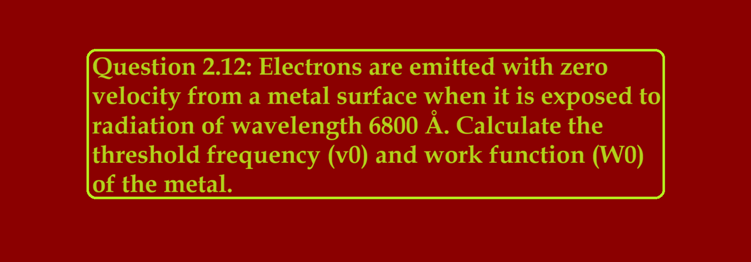Question 2.12: Electrons are emitted with zero velocity from a metal surface when it is exposed to radiation of wavelength 6800 Å. Calculate the threshold frequency (ν0) and work function (W0) of the metal.
Question 2.12: Electrons are emitted with zero velocity from a metal surface when it is exposed to radiation of wavelength 6800 Å. Calculate the threshold frequency (ν0) and work function (W0) of the metal.
Answer 2.12: Threshold wavelength of radiation (Λ0) = 6800 Å = 6800 × 10–10 m = 6.8 × 10–7m
Threshold frequency (ν0) of the metal
ν0 = c/Λ0
c = 3 × 108 m/s
ν0 = 3 × 108/6.8 × 10–7m
Thus, the threshold frequency (ν0) of the metal is 4.41 × 1014 s –1.
Hence, work function (W0) of the metal = hν0
= (6.626 × 10–34 Js) (4.41 × 1014 s–1) = 2.922 × 10–19 J
work function (W0) = 2.922 × 10–19 J



